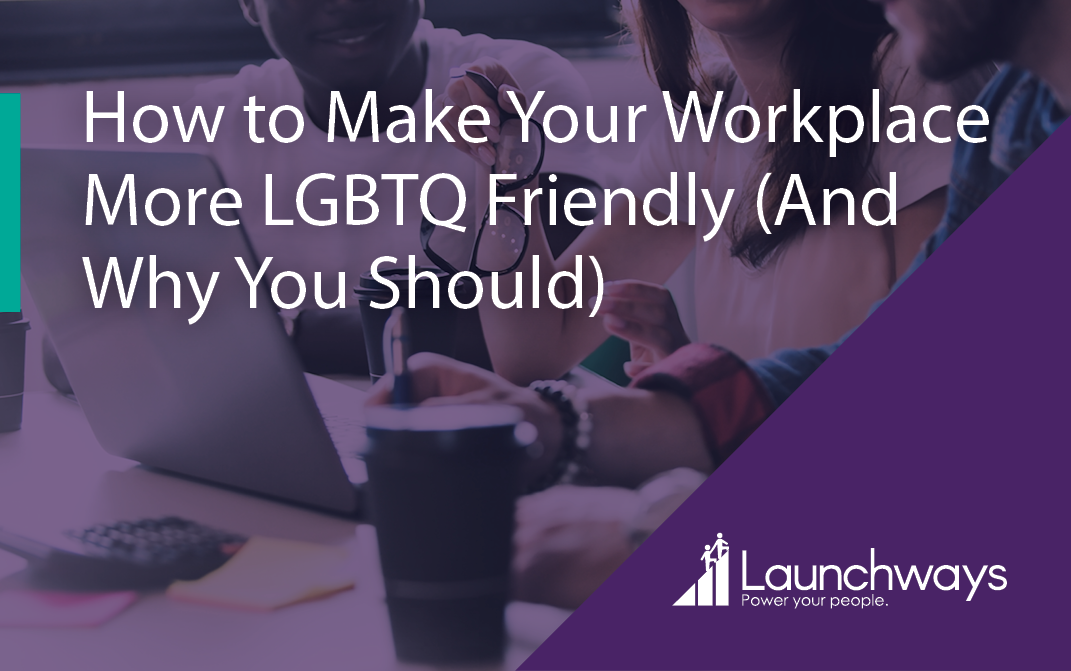The LGBTQ community has yet to have full federal protection in the workplace against discrimination. In May 2019,
Marriage equality is now a federal law, impacting all 50 states, yet there are still 31 states without discrimination protection for this community, according to the Human Rights Campaign Foundation’s report, A Workplace Divided.
In your workplace, diversity and inclusion should be two main priorities, and adequately addressing these matters means that you are both recognizing and encouraging the LGBTQ community to feel open, safe, and normal living and working as they are.
Here are key reasons why you should take action to create a more inclusive and diverse workforce, and the ways to do it.
Impacts on the LGBTQ community when they feel excluded
It’s easy to see why LGBTQ workers would continue to feel excluded in the workplace. They often don’t feel understood or acknowledged, and they may feel like they’re not able to participate in normal discussions or activities because of the fear of being judged or stereotyped.
Many people in this community feel overly sexualized. Essentially what this means is that when it becomes known that they have a certain “nontraditional” sexual orientation, they become their sexual identity, instead of coworkers seeing them for themselves and their work capabilities.
This feeling of exclusion leads to negative feelings and even lack of productivity at work: 25% of LGBTQ workers report feeling distracted from work, as the Human Rights Campaign report shows, 17% report feeling exhausted from having to hide their sexual orientation, and 31% report feeling unhappy or depressed at work.
Why encourage openness and acceptance?
According to the aforementioned report, 46% of workers who identify as LGBTQ remain closeted, and half of those surveyed said that there aren’t any employees at their organization who are open about it.
While it’s of course not always a great idea to have everyone discuss or admit to their sexual experiences in the workplace, the reasons behind staying closeted show how fearful a non-inclusive workplace can be for this community. The top reasons that they stay closeted are:
• The potential to be stereotyped by coworkers
• To avoid making others feel uncomfortable
• To avoid losing connections or relationships
• To avoid coworkers thinking they are attracted to them because they are LGBTQ
Make sure in your efforts to encourage openness that you aren’t forcing LGBTQ workers to disclose things they aren’t comfortable with; the key is to educate staff and have serious discussions about these topics. If they aren’t talked about, LGBTQ workers will feel like they have to remain closeted. And while some topics are “supposed to be” taboo at work, like sex or politics, the truth is, many employees talk about their lives outside of work on a daily basis with their coworkers.
Why educate employees?
It’s also important to keep all employees educated about policies and aware of how best to behave in the workplace. You aren’t telling them what to believe, just how to represent the company and treat others while they’re on your watch.
Many employees may just not be aware of these issues, and so they may not even recognize that their behavior is out of line or could be offensive to their coworkers. It’s your responsibility to thus educate them so that they are more thoughtful and deliberate about how they treat certain topics and talk to each other at work.
The Workplace Divided report revealed an additional alarming statistic in this area: 1 in 5 LGBTQ workers have experienced being told by a coworker that they should dress either more feminine of masculine; only 1 in 24 non-LGBTQ workers reported this having ever happened to them. Additionally, 36% of non-LGBTQ employees said that they would feel uncomfortable if an LGBTQ coworker started talking about their dating life.
So, there is clearly still a bias in place that needs to be addressed in each and every workplace. Part of ensuring you are fostering an inclusive and diverse office is educating everyone to get them thinking about their behavior and the way they treat others.
Benefits of inclusivity for your company
Your LGBTQ workers will not be the only ones who benefit from addressing these issues. Think about the benefits your organization will also experience:
• Less discrimination lawsuits and therefore less in legal fees
• Less turnover, as 1 in 4 LGBTQ workers said they stayed in a job because the workplace was accepting of LGBTQ people
• Health insurance costs may go down because the health of all employees is given more consideration
• Partnerships could increase as your company becomes known as a socially responsible organization
Another big reason to address discrimination and encourage inclusivity and diversity in the workplace is because a more diverse office is a more profitable office. A study from Boston Consulting Group last year found that companies with above-average diversity on management teams earn 19% more in revenue than companies with below-average diversity on these teams.
Why? Because diverse teams create diverse perspectives; gone are the days of the bureaucracy, where one team of older white men makes all the decisions for an organization. For any company to grow and succeed, diversity, and therefore greater inclusivity, are assets.
Additional strategies to foster inclusivity and diversity in the workplace
So where should you begin? Try implementing these strategies to foster inclusivity and better educate the workforce about discrimination and how to create accepting, inclusive workplaces:
• Talk about how detrimental stereotyping can be, in general and also related to someone’s gender or sexuality.
• Share statistics similar to those presented in this article to show employees how important these issues really are for a functioning workplace.
• Engage with learning materials that present workplace scenarios so that employees can learn how to approach certain topics and actually visualize how to behave to encourage inclusivity.
• Always stress the importance of diversity and make sure the executive team shares with the company about efforts they are taking in these areas (for example, those in charge should admit when they become aware of areas they could improve, such as diversifying the board of directors).
• Provide resources for LGBTQ workers if they experience harassment or discrimination from coworkers, or if they just need someone to talk to, like an HR representative or counselor.
• Implement actual company policies that protect workers against discrimination and harassment in the workplace. Make sure these policies are distributed to all employees and are available for reference.
Key takeaways
• Because discrimination rights based on sexuality continue to stall on a federal level, take action in your individual workplace
• If the LGBTQ community feels excluded in the workplace, they’re more likely to leave and are more likely to feel unhappy or depressed at work
• Encourage openness and acceptance at work so that LGBTQ workers don’t feel like they have to remain closeted to be liked
• Educate employees, especially non-LGBTQ workers, so that they are aware of these issues and are better aware of how to behave
• Recognize the financial and productivity benefits that an inclusive and diverse workplace provides
• Create support systems and company policies that address these issues
When you’re able to educate and encourage, and foster diversity and inclusivity—teaching your employees what they mean, why they’re important, and how they help the entire workplace—your company culture will shift toward being more socially aware and responsible.


